The average cost to install solar panels for a 6 kW system is around $15,870. You will find that most installers mention price in watts. The per-watt solar panel installation cost varies from $3-$5, with most people paying $4 per watt.
Some people get small systems installed for as low as $3,500, and some pay more than $40,000. The price depends on various factors but mostly revolves around your system’s power.
Let’s check out everything you need to know about the cost of installing a solar system.
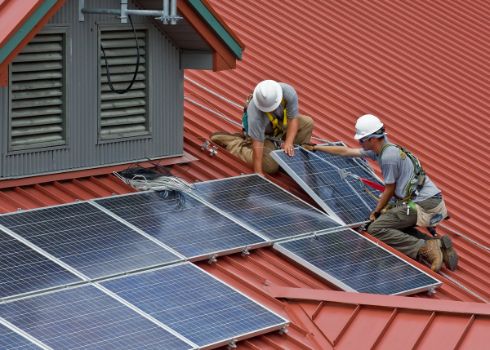
Solar Panels Installation Cost by State
| State | Cost per watt (before tax credit) | Cost for 6-kW system (before tax credit) | 2022-2032 federal tax credit value (30%) | Cost for 6-kW system (after tax credit) |
| Alabama | $2.45 | $14,700 | $4,410 | $10,290 |
| Alaska | $2.41 | $14,460 | $4,338 | $10,122 |
| Arizona | $2.44 | $14,640 | $4,392 | $10,248 |
| Arkansas | $3.06 | $18,360 | $5,508 | $12,852 |
| California | $2.86 | $17,160 | $5,148 | $12,012 |
| Colorado | $3.44 | $20,640 | $6,192 | $14,448 |
| Connecticut | $3.22 | $19,320 | $5,796 | $13,524 |
| Delaware | $2.75 | $16,500 | $4,950 | $11,550 |
| Florida | $2.58 | $15,480 | $4,644 | $10,836 |
| Georgia | $3.20 | $19,200 | $5,760 | $13,440 |
| Hawaii | $2.67 | $16,020 | $4,806 | $11,214 |
| Idaho | $2.93 | $17,580 | $5,274 | $12,306 |
| Illinois | $3.16 | $18,960 | $5,688 | $13,272 |
| Indiana | $3.63 | $21,780 | $6,534 | $15,246 |
| Iowa | $3.45 | $20,700 | $6,210 | $14,490 |
| Kansas | $2.39 | $14,340 | $4,302 | $10,038 |
| Kentucky | $2.34 | $14,040 | $4,212 | $9,828 |
| Louisiana | $3.17 | $19,020 | $5,706 | $13,314 |
| Maine | $3.45 | $20,700 | $6,210 | $14,490 |
| Maryland | $3.13 | $18,780 | $5,634 | $13,146 |
| Massachusetts | $3.54 | $21,240 | $6,372 | $14,868 |
| Michigan | $3.78 | $22,680 | $6,804 | $15,876 |
| Minnesota | $3.45 | $20,700 | $6,210 | $14,490 |
| Mississippi | $2.64 | $15,840 | $4,752 | $11,088 |
| Missouri | $2.85 | $17,100 | $5,130 | $11,970 |
| Montana | $2.42 | $14,520 | $4,356 | $10,164 |
| Nebraska | $2.83 | $16,980 | $5,094 | $11,886 |
| Nevada | $2.60 | $15,600 | $4,680 | $10,920 |
| New Hampshire | $3.61 | $21,660 | $6,498 | $15,162 |
| New Jersey | $2.95 | $17,700 | $5,310 | $12,390 |
| New Mexico | $3.39 | $20,340 | $6,102 | $14,238 |
| New York | $3.48 | $20,880 | $6,264 | $14,616 |
| North Carolina | $3.04 | $18,240 | $5,472 | $12,768 |
| North Dakota | $2.42 | $14,520 | $4,356 | $10,164 |
| Ohio | $2.98 | $17,780 | $5,364 | $12,516 |
| Oklahoma | $2.62 | $15,720 | $4,716 | $11,004 |
| Oregon | $3.13 | $18,780 | $5,634 | $13,146 |
| Pennsylvania | $3.06 | $18,360 | $5,508 | $12,852 |
| Rhode Island | $3.61 | $21,660 | $6,498 | $15,162 |
| South Carolina | $2.89 | $17,340 | $5,202 | $12,138 |
| South Dakota | $2.39 | $14,340 | $4,302 | $10,038 |
| Tennessee | $2.97 | $17,820 | $5,346 | $12,474 |
| Texas | $2.77 | $16,620 | $4,986 | $11,634 |
| Utah | $2.69 | $16,140 | $4,842 | $11,298 |
| Vermont | $3.14 | $18,840 | $5,652 | $13,188 |
| Virginia | $3.04 | $18,240 | $5,472 | $12,768 |
| Washington | $3.25 | $19,500 | $5,850 | $13,650 |
| Washington, D.C. | $3.50 | $21,000 | $6,300 | $14,700 |
| West Virginia | $2.92 | $17,520 | $5,256 | $12,264 |
| Wisconsin | $3.41 | $20,460 | $6,138 | $14,322 |
| Wyoming | $2.57 | $15,420 | $4,626 | $10,794 |
Source: Sunpower
Solar Panel Installation Cost by Type
Monocrystalline Solar Panels
These are the most efficient and, therefore, generally the most expensive type of solar panel. The cost can range anywhere from $0.85 to $1.25 per watt. For a 6 kW system, which would be 6000 watts, the cost can range from $5,100 to $7,500.
Polycrystalline Solar Panels
Polycrystalline panels are slightly less efficient than monocrystalline panels, so they tend to be a bit cheaper. The cost can range from $0.75 to $1.00 per watt. For a 6 kW system, the cost would range from $4,500 to $6,000.
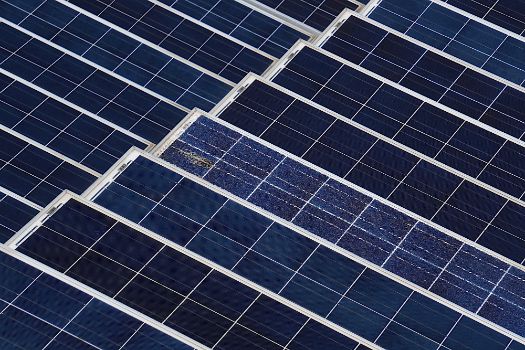
Thin-Film Solar Panels
Thin-film panels are the least efficient and cheapest option. They’re also more flexible and lightweight than crystalline panels, which can be advantageous in some applications. The cost can range from $0.50 to $0.75 per watt. For a 6 kW system, the cost would range from $3,000 to $4,500.
Solar Panel Installation Cost by System Size
6 kW system
- Pre-tax credit cost = 6,000 watts * $1.05/watt = $6,300
- Post-tax credit cost = $6,300 – (0.30 * $6,300) = $4,410
8 kW system
- Pre-tax credit cost = 8,000 watts * $1.05/watt = $8,400
- Post-tax credit cost = $8,400 – (0.30 * $8,400) = $5,880
10 kW system
- Pre-tax credit cost = 10,000 watts * $1.05/watt = $10,500
- Post-tax credit cost = $10,500 – (0.30 * $10,500) = $7,350
12 kW system
- Pre-tax credit cost = 12,000 watts * $1.05/watt = $12,600
- Post-tax credit cost = $12,600 – (0.30 * $12,600) = $8,820
14 kW system
- Pre-tax credit cost = 14,000 watts * $1.05/watt = $14,700
- Post-tax credit cost = $14,700 – (0.30 * $14,700) = $10,290
16 kW system
- Pre-tax credit cost = 16,000 watts * $1.05/watt = $16,800
- Post-tax credit cost = $16,800 – (0.30 * $16,800) = $11,760
These figures are based on average costs, and actual prices may vary. Also, these calculations assume that the full 30% tax credit can be applied, which may not be the case for all buyers due to the specifics of the tax code. Always consult with a tax professional when determining eligibility for tax credits. Moreover, these prices are only for solar panels. They don’t include additional costs.
Also Read: How Much Does It Cost To Install Central Air Unit?
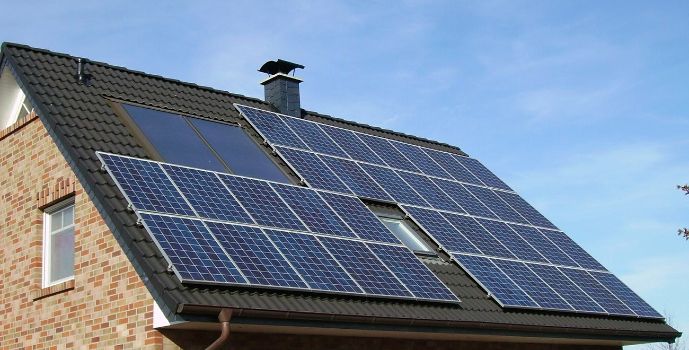
Factors that Affect Solar Panel Installation
Size, Weight, and Number of Panels
The panels’ size and weight can impact the installation process’s complexity. Larger, heavier panels may require more robust mounting systems and more labor to install. Additionally, the number of panels needed will directly impact cost, as more panels mean higher material costs and potentially longer installation times.
Amount of Sunlight
The amount of sunlight your city receives can greatly impact the efficiency of your solar panels and the number you may need to meet your energy goals. Cities with high sunlight, like Phoenix, Arizona, or Las Vegas, Nevada, would require fewer panels than cities with less annual sunlight, such as Seattle, Washington, or Portland, Oregon.
Local Incentives
Many localities offer incentives like net metering, which allows homeowners to sell excess power back to the grid, effectively reducing the overall cost of their solar panel system. States like California, Massachusetts, and New Jersey offer strong incentive programs.
Federal Solar Tax Credit
The federal solar tax credit, or the Investment Tax Credit (ITC), allows homeowners to deduct 30% of the cost of installing a solar energy system from their federal taxes. This applies to residential and commercial systems, with no cap on its value.
Type of Panels
The type of solar panels you choose can significantly affect the cost of your system. Monocrystalline panels are generally the most expensive but also the most efficient, while thin-film panels are the least expensive and least efficient.
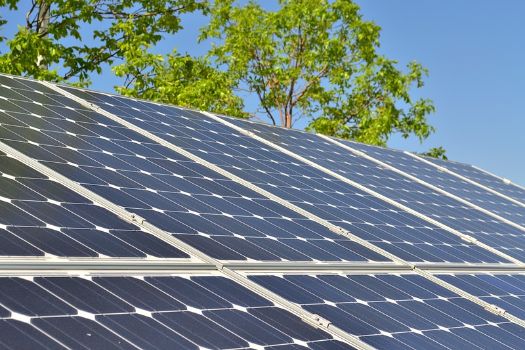
Roof Design
The design of your roof can affect installation costs. Steeper roofs can be more difficult to work on and may require additional safety measures. The material and condition of your roof can also impact costs. Some materials are easier to install panels on than others, and a roof in poor condition might need to be repaired or replaced before panels can be installed.
Solar Panel Company
Finally, the company you choose for your solar installation can affect the cost. Different companies offer different pricing structures, and the level of service and quality of installation can also vary. Getting quotes from multiple companies and reading reviews is important before deciding.
Indirect Costs to Consider When Installing Solar Panels
Maintenance
Solar panels generally require little maintenance, but budgeting for potential issues is a good idea. For example, you may need to replace the inverter after 10-15 years, costing around $1,000-$2,000. Moreover, the service costs range from $140 to $190 per service or an average of $500 annually.
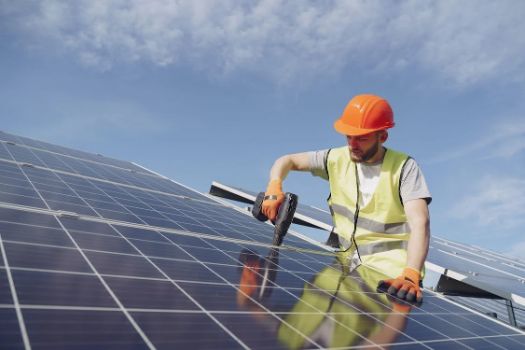
Cleaning
Depending on the environment, solar panels may need to be cleaned occasionally to maintain their efficiency. This might need to be done more frequently in dustier areas or places with heavy snowfall. Professional solar panel cleaning can cost between $100-$200 per visit, depending on the size and accessibility of the system.
Home Insurance
Some insurers may raise your home insurance premiums after installing solar panels due to the increased replacement cost of your home. This increase can vary widely, but a ballpark figure might be an extra $10-$20 monthly.
Solar System Monitoring
Many solar installers offer system monitoring services that can help you track your energy production and identify any issues with your panels. This can cost around $10-$20 per month or could be included as part of your initial installation cost.
Tree Trimming
If trees shade your panels, you may need to trim them to maintain optimal performance. The cost of tree trimming can vary based on the size and number of trees, but a typical range might be $200-$600 per tree.
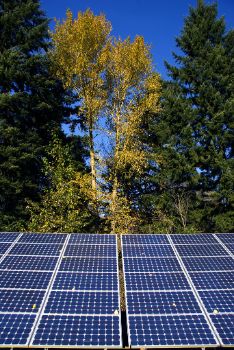
Roof Repair
If your roof needs repairs before installing solar panels, this can significantly increase your initial costs. Roof repair costs vary widely based on the extent of the repairs needed, but a typical range might be $300-$1,000 for minor repairs and several thousand dollars for more extensive work.
Solar Panel Repair
If a panel gets damaged and needs to be replaced, this could cost around $200-$300 per panel, plus labor costs. However, many solar panels have warranties that can cover some or all of this cost.
Cost-Benefit Analysis: How much do Solar Panels Save?
The exact amount of savings from installing solar panels can vary greatly depending on many factors, including the cost of electricity in your area, the amount of sunlight your home receives, the size and orientation of your roof, and the cost of the solar system itself.
Let’s consider an example to illustrate the potential savings:
Suppose you install a 6 kW solar panel system that costs $15,000 (after accounting for the 30% federal tax credit). If your average monthly electricity bill is $150, that’s $1,800 per year you spend on electricity.
Let’s say your solar panels can cover 100% of your electricity needs. That means you’re saving $1,800 per year by not having to pay for electricity. Therefore, to calculate the payback period, you would divide the total cost of the solar system by the annual savings:
$15,000 / $1,800 = 8.33 years
So in this example, it would take a little over 8 years to recoup the solar panels cost through savings on your electricity bill. After that point, you would get your electricity for free, saving you $1,800 annually.
However, it’s important to note that electricity prices tend to rise over time. The U.S. Energy Information Administration estimates that electricity prices have increased at an average rate of about 2.2% per year over the past decade. If electricity prices continue to rise at this rate, your savings will increase yearly, and the payback period could be even shorter.
Considering that solar panels can last 25-30 years or more, this could result in substantial savings over the system’s lifetime. Plus, you would reduce your carbon footprint and contribute to a more sustainable energy future.
Remember that savings can vary based on many factors, so it’s a good idea to work with a reputable solar installer who can provide a detailed cost-benefit analysis for your specific situation.
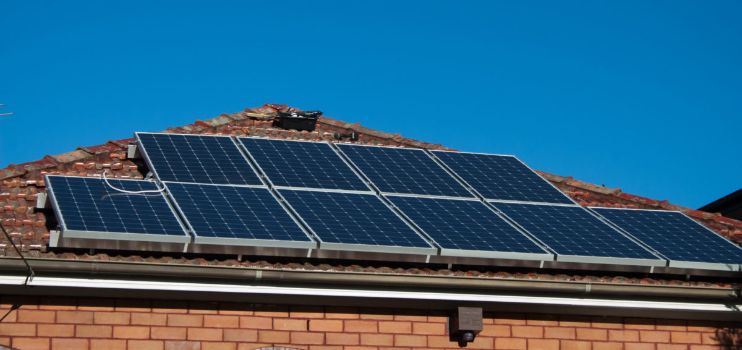
Solar Panel Installation Cost: How to Pay for Solar Panels?
- Cash Purchase: Paying upfront in cash is a straightforward option. It allows you to own the system outright and maximizes your financial benefits, but it requires a significant initial investment.
- Solar Loan: Many solar-specific loan options have varying terms and rates. This allows you to spread out the system’s cost over time, often without any down payment.
- Solar Lease: In a solar lease, you agree to pay a fixed monthly “rent” in exchange for using the solar energy system. The system is owned and maintained by a third-party company.
- Power Purchase Agreement (PPA): Similar to a lease, a PPA involves a third-party owner who installs and maintains the system on your property. You agree to purchase the power the system generates at a set rate.
Solar Panel Installation Cost: Tips to Save Money
- Comparison Shop: Get quotes from multiple installers to ensure you get the best deal.
- Energy Efficiency: Increase your home’s energy efficiency before installing solar to reduce the system size you need.
- Tax Credits and Incentives: Take advantage of all available federal, state, and local solar incentives.
- Buy in Bulk: If you have neighbors who are also interested in solar, you might be able to negotiate a group discount.
- DIY Installation: If you’re particularly handy, you could consider a DIY installation to save on labor costs, but be aware that this project requires specific knowledge and skills.
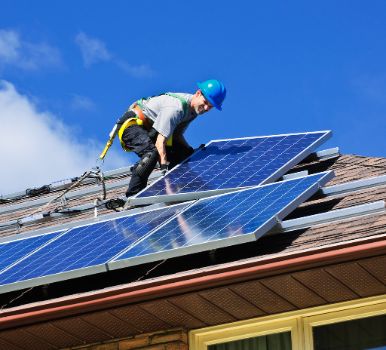
Solar Panel Installation: How the Process Works?
The solar panel installation process involves several steps and usually takes between one to three days to complete, depending on the size and complexity of the system. Here’s a brief overview of the process.
Site Assessment and Design: Before the installation begins, a professional will visit your property to assess the site and design the system. This involves evaluating your roof’s structure, angle, and shading to determine the best placement for the panels. They’ll also look at your electrical system to ensure it’s compatible with the new solar setup.
Permitting: Once the design is complete, the installer will submit the necessary paperwork to local authorities to obtain building permits. The requirements can vary by location.
Preparation: The crew prepares your roof to ensure it’s ready for panel installation. This may involve reinforcing the roof, laying down wiring, and installing mounting hardware.
Panel Installation: The solar panels are then affixed to the mounting hardware. The panels must be positioned correctly to maximize sunlight exposure.
Inverter Installation: The inverter, which converts the direct current (DC) produced by the panels into alternating current (AC) usable in your home, is installed and connected to the solar panels and your home’s electrical system.
System Check and Connection: After everything is set up, the system is tested to ensure it’s working correctly. Once tested, it’s connected to the grid. This requires coordination with your utility company and a final inspection to receive grid interconnection approval.
Monitoring: Once the system is operational, it’s important to monitor its performance to ensure it’s working efficiently. Many installers provide monitoring systems that allow you to track your solar panels’ output over time.
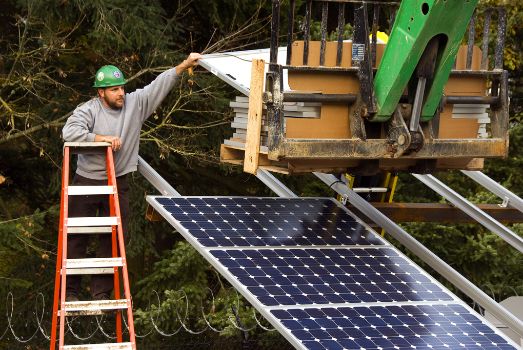
Frequently Asked Questions
How much energy can you save with solar panels?
The energy you save with solar panels depends on your home’s energy use and the size of your solar system. On average, a typical household can offset 70-100% of its electricity use with solar.
Do solar panels increase my home value?
Yes, solar panels can increase your home value. According to studies, homes with solar panels sell for about 4.1% more on average than comparable homes without solar.
How much time does it take to install solar panels?
The physical installation of solar panels typically takes 1-3 days, but the entire process, including site assessment, design, permitting, and inspections, can take a few weeks to a few months.
How long do solar panels last?
Solar panels typically last 25-30 years or more. While the panels’ efficiency decreases slightly over time, most are still about 80% efficient after 25 years.
What is net metering?
Net metering is a policy that allows homeowners with solar panels to sell unused electricity back to the grid. This can significantly offset the cost of a solar system.
Can I run my house only on solar panels?
Yes, running your house only on solar panels is possible, especially if you install a battery storage system when the sun isn’t shining. However, most homes remain connected to the grid for times when additional power is needed.